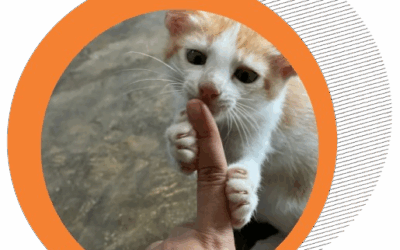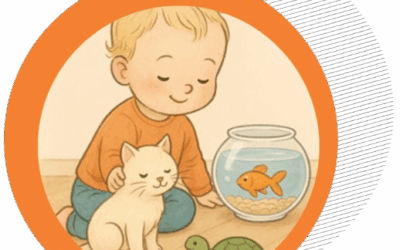
Best Food Choices for Cats
By: Drh. Mikeu Paujiah and Mariyam, S. Kom
Animal welfare is closely linked to food. Providing the right food is one of the key factors in maintaining a cat’s health. Not only for pet cats, but we also need to consider food when doing street feeding for stray cats.
There are several types of cat food, each with different purposes, advantages, and disadvantages. In this article, we will discuss various types of cat food.
1. Dry Food
This type of food is usually in the form of kibble. With a low water content of less than 10%, dry food has a long shelf life and is practical to serve. In addition to its easy storage, dry food is also economical.
For dental health, dry food has the advantage of helping keep teeth clean. The chewing and grinding activity can help prevent plaque buildup and tartar. However, due to its low moisture content, cats may be prone to dehydration if they do not drink enough water. So, always ensure your cat gets enough fresh water when consuming this type of food.
Read Also : Healthy Cats = Proper Diet
2. Wet Food
Wet food has a high water content, up to 75%. Cats generally prefer this type of food because of its soft texture. It is often more flavorful than dry food. Wet food is usually packaged in cans and contains fresh ground meat.
Before the packaging is opened, it has a relatively long shelf life. Due to its high moisture content, wet food does not pose a dehydration risk for cats. However, because of its high-quality processing and nutritional content, wet food tends to be more expensive than dry food.
3. Semi-Moist Food
Semi-moist food contains about 15-30% water. It typically includes fresh or frozen animal tissue, cereal grains, fats, and simple sugars as its main ingredients.
Its texture is softer than dry food, and it has a long shelf life when stored in cans, like wet food. However, this product can dry out and lose its appeal if left in a feeding bowl for too long. For this reason, semi-moist food is usually sold in single-serving or portion-sized packaging.
Read Also : Tips for Feeding Orphaned Kittens
4. Home-Cooked Food
Home-cooked food is prepared by the pet owner. The nutritional content varies depending on the chosen ingredients. Generally, this type of food is rich in nutrients. However, the owner must ensure a balanced diet. It is recommended to follow a recipe formulated by a pet nutritionist to meet the cat’s dietary needs.
Additionally, cleanliness in the preparation process is essential. Although it takes more time and effort, home-cooked food is usually highly nutritious and well-liked by pets.
5. Snack
Snacks or treats for cats have become increasingly popular among pet owners in recent years. Typically, owners provide treats not for their nutritional value but as an expression of love and affection.
Treats can create a positive emotional bond between pets and their owners. Due to their emotional benefits, taste is the primary factor in choosing this type of food.
Read Also : Stop! Consider This Before Adopting a Cat!
Keeping your cat healthy starts with selecting the right food. Each type of food has its own advantages and disadvantages. Understanding your cat’s nutritional needs and carefully considering the nutritional content of each food option is essential.
Consulting a veterinarian for the best recommendations tailored to your cat’s health and special needs is always a good idea.
Reference :
Dog and cat foods – Management and nutrition. (n.d.). MSD Veterinary Manual. Retrieved February 2, 2025, from https://www.msdvetmanual.com/management-and-nutrition/nutrition-small-animals/dog-and-cat-foods
Themes, U. (2016, July 31). Types of pet foods. Veterian Key. https://veteriankey.com/types-of-pet-foods/
Related Post :
Not Just a Fashion Statement: Carrying Cats Should Prioritize Welfare, Not Aesthetics
By: drh.Mikeu Paujiah, M.MIn recent years, we have increasingly seen a trend on social media: cats being taken for walks in transparent backpacks that fully expose their bodies to the outside. At first glance, it looks cute, stylish, and adorable. However, when viewed...
More Than Just Style: Ethical Ways to Carry Cats According to Animal Welfare Principles
By : drh. Mikeu Paujiah, M.M.In the era of social media, we often see cats being taken out in transparent backpacks that display their entire bodies to the world. Cute? Perhaps. But is it comfortable and safe for cats? Not necessarily.Cats are highly sensitive beings....
I’m Not Trash: The Story of a Cat Who Was Once Abandoned
I was abandoned. Not because I was naughty. Not because I was sick. But because I was no longer seen as important. A small cardboard box became my last shelter before being thrown to the side of the road. People walked by, some glanced, but none stopped. I stayed...
Build Your Child’s Responsibility Through Pet Care
By: Drh. Mikeu Paujiah, Dipl. MontessoriKeeping a pet is not just about filling leisure time. For children, taking care of a pet can be a powerful way to learn empathy, responsibility, and compassion. However, without proper guidance from parents, this process may be...
Children & Pets: Playmates and Unexpected Empathy Teachers
Having a pet is not only enjoyable for children but also brings tremendous benefits for their growth and development. “Children and pets: playmates and empathy teachers”—this is the dual role animals play in a child’s life, a role we often overlook.Let’s explore how...
Pets Suitable for Children, According to Age!
Find the right pet for your child based on their age. From fish to dogs, check out our child-friendly pet recommendations here!By: Drh. Mikeu Paujiah, Dipl. MontessoriChoosing a pet for your child isn’t just about picking the cutest one. Every animal has its own...





